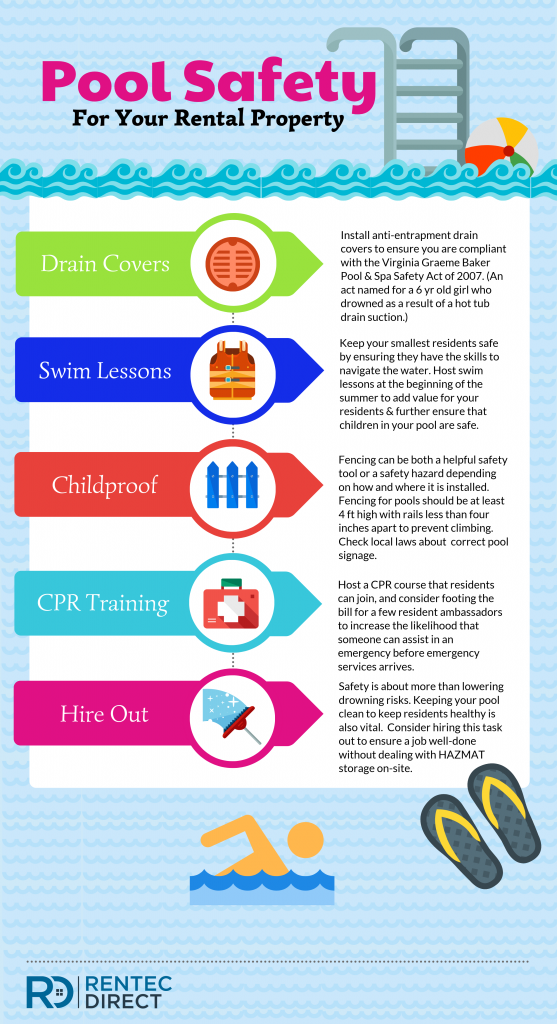
Psychological self defense refers to the threat of injury to the self as a threat to identity. This defense reaction can be impeded by pathological threats, which don't care about who is injured. To change the perception of the threat, it is important to affirm a value that you hold. Here are three examples. Continue reading to learn more about them all.
Psychopaths don't care about the hurt.
Unless you have a very strong instinct for self defense, a psychopath will not care who gets hurt. They do not have any remorse for what they do and will not care who gets hurt. They don't care about the hurt they cause and won't feel bad about it. Psychopaths believe that the rules of the universe don't apply to their world. These people will also do anything they can to get away with it, including harming other people.
They don't give a damn about who gets hurt
A psychopath on the other hand doesn't care about whether another person is hurt in self defence and will often manipulate. They create a sense of fear in their victim, and often veil their threats with stories of disappearances or family secrets. This manipulation strategy will play on the victim's emotions and mind, so that they give into the bully's demands.

Imperfect self defense
There is a big difference between ordinary and imperfect self-defense. Imperfection in self-defense refers to situations in which an individual believes that they are in imminent danger and must resort to deadly force to defend themselves. This doctrine is not like ordinary self-defense and can only be used in situations where the individual is trying to defend himself or herself against a deadly threat.
A deadly force
It is okay to use deadly force in self defense if the person who is defending themselves believes that they are about to be seriously injured or killed. To justify the use forceful violence, a rapist must make threats to inflict serious injury or death on the victim. There are four elements that make a force fatal. They are: the use of force in self defense must be justified by an attack that is unprovoked, the use of an objectively reasonable amount of force, and the individual must reasonably fear harm or death. There are two exceptions to the rule: excessive force during an initial attack or withdrawal.
Motivational theory
R.W. Rogers, in 1975. Later expanded in 1983. The protection motiv theory attempts to predict how people will react in stressful situations. The major topics covered were the prevention of smoking and the dangers of cancer. The safe use of pesticides, bicycle helmets and reducing caffeine intake were minor topics. The research shows that the psychological and physiological factors affecting self defense are the same as for other topics.

Denialism
Denial is a primitive defence mechanism. It can be used as a standalone defense mechanism or along with other subtle mechanisms in order to avoid unpleasant emotions and areas of life. Students might not acknowledge their lack of preparation during tests, for instance. In the same way, someone might avoid acknowledging their inexperience during a test by minimising their efforts. There are situations where self-defense denial can prove to be detrimental.
FAQ
What is a good 7-day workout schedule?
A seven-day program should include three days of cardio training (running, biking and swimming), two strength exercise (using free weights or weight machines) and one flexibility/core work out (yoga, Pilates). It's essential to do each activity at least once a week. Maximum 45 minutes should be allotted for each session.
Cardiovascular Exercises: Swimming, Cycling, Running
You should aim to get at least 60 mins of cardio exercise per week. Aim for 75 minutes per week to get the best results. Cardio exercise can stimulate blood flow and increase muscle growth.
Strength Training
While cardio exercises target the heart and lungs, strength training targets the muscles and bones. Strength training is a great way to build lean muscle mass that helps you burn calories even if you are not actively exercising.
Flexibility and Core Workouts
Core and flexibility exercises are great ways of strengthening your whole body. Both yoga and Pilates are excellent options.
What is the best workout order?
It depends on what you are looking for. Start with heavy lifting if you're looking to build muscle mass. Then, move on to cardio. For those who want to lose weight or exercise, you can switch from cardio to strength-training.
Start with cardio if you only want to lose fat. Then add strength training after.
Do cardio first if you are looking to increase muscle mass. It stimulates growth hormones that help build muscle mass.
Before you start your workout, it is a good idea to eat. This will fuel your muscles and make them work harder. It makes you feel better when you exercise.
What is the best workout routine to build muscle?
There are two main things you must do when building muscle mass. These are compound movements and isolation exercises. Isolation exercises target specific muscles while compound moves focus on multiple groups at once.
You can improve your workouts by choosing exercises that challenge all major muscle groups. This ensures that you are always working hard during each session.
MyFitnessPal can help you keep track of your activity. You can log everything, from calories burned to weight lifting. You can also create customized meal plans based upon your goals.
Do I have to exercise every single day?
No! Get at least 30 minutes of moderate-intensity physical activity 5 days a week. It means you need to exercise hard enough or walk fast enough that you are slightly out-of- breath.
Egg is good for you?
All nutrients are contained in the egg. It aids in maintaining strong bones, healthy hearts, and lungs, as it also maintains stable blood pressure.
Eggs are a great source of protein, vitamins A and B12, D. E. K, calcium, magnesium, selenium and riboflavin.
Egg yolks are high in cholesterol. It does not contain any saturated fat. Eggs are low in saturated fat compared to other foods.
They are also low-calorie and high in sodium. Because they can be cooked in almost any way that you wish, they are versatile. They can be cooked in a variety of ways: poach, saute, bake, hard-boil or fry.
They are extremely nutritious and simple to prepare.
Two whole eggs should be eaten each day. You don't have to eat eggs.
Our bodies need eggs to provide the essential nutrients they require. Consider adding eggs to your daily meal plan today.
Is Cardio Better Than Strength Training?
Both are equally beneficial. But cardio is a much better choice if you want to gain muscles faster.
Cardio burns a lot more calories per minute that strength training and is more effective at burning fat.
Strength training increases muscle mass but takes more time than cardio.
Is it true?
Protein helps maintain healthy bone and tissue. Consuming too much protein can result is calcium excretion via urine. This can lead to kidney stones.
It's important to note that not everyone gets kidney stones after eating more than 2 grams of protein per kilogram (2.2 pounds) of body weight. It is possible to eat high levels of protein without developing kidney stones.
Your sodium intake can prevent kidney stone formation. Sodium helps regulate water balance in the kidneys. Too much sodium results in a higher risk of developing kidney stones.
You can also try reducing your protein intake if you get kidney stones. Protein accounts for about half the daily caloric requirement of most adults. You'll lose weight if you reduce your intake of protein.
If you do decide to eat more protein, don't go overboard. Aim for less than 20% of total calories from protein.
Statistics
- Are You One of the 20% of Guys (mh.co.za)
- Candidates and applicants must pass all four tests at 70% (minimum level) to graduate from Basic Deputy U.S. Marshal (BDUSM) Training. (usmarshals.gov)
- An estimated calorie range for moderately active adult males falls between 2,200 to 2,800 calories per day, depending on age. (eatright.org)
- 10 pounds in a month is likely during a lean bulking phase, especially for beginners. (muscleandstrength.com)
- According to the American Heart Association, blood pressure should be checked at least once every two years, beginning at age 20. (my.clevelandclinic.org)
External Links
How To
How do I lose fat by exercising?
Exercise reduces calories by increasing metabolism, and oxygen consumption.
Moderate intensity exercise is a safe way to lose weight.
To burn fat while exercising, follow these tips:
-
Cardio exercises can include running, walking, swimming or cycling.
-
Do 30 minutes of exercise three times a week.
-
Strength training is a great way to lose weight.
-
Avoid intense training. You can build muscle without having to lose muscle tissue.
-
Hydrate well during exercise. Water is essential for flushing out toxins and keeping your body hydrated.
-
After exercising, consume low-fat protein smoothies. Protein shakes are great for your muscles and energy.
-
Eat smaller meals throughout the day, so you don't feel hungry between meals.
-
Don't skip breakfast! Skipping breakfast can make you tired and sluggish.
-
Take care of your mental health. Stressful situations may slow down your metabolism.
-
Keep a positive attitude. Studies show that overweight people are more likely to be obese than those who perceive themselves as attractive.
-
Get enough sleep. Insufficient sleep can make it more difficult to lose weight.
-
Active living is key. Move around at least once an hour.
-
Maintain a healthy diet. Eat right to feel satisfied and full for longer.
-
Relaxation is possible by finding ways to relax. Your body won't release stress hormones that cause muscle tissue destruction if you have a tense mind.
A balanced diet is one that includes all of the essential nutrients required for growth.
Six small meals per day is better than three large meals. This gives your body the time it needs to process what you've eat.
To maintain strong bones, you need to consume 500 mg of calcium each day. Calcium can also be found in milk products, yogurt, fortified Soy beverages, orange Juice, cereals and bread.
Calcium is found in leafy green vegetables and beans, tofu as well as nuts, seeds, cheese, and seeds.
Your body needs vitamin D to absorb calcium. It's found in fatty fish, egg yolk, and some fortified foods.
Vitamin E is vital for your skin's health. It can be found as a vegetable oil, wheat germ, peanuts or almonds.
Your body requires zinc to function normally and for wound healing. Zinc can be found in seafood, legumes and meats.
Zinc deficiencies can lead to fatigue, decreased appetite, depression, and reduced immunity.
Eating too much sugar causes insulin resistance, which increases blood glucose levels. Insulin resistance can lead to weight gain.
Insulin resistance occurs when the bloodstream is full of free radicals. Free radicals are molecules containing unpaired electrons which cause damage to cells membranes.
The most common sources of free radicals include food additives.
Free radical damage can cause cancer, heart disease and diabetes, as well as arthritis, asthma, and other diseases.
To prevent free radical damage, eat a healthy diet rich in antioxidants. Antioxidants protect against oxidative damage.
Vitamin C (found on citrus fruits), Beta carotene, found in carrots and sweet potatoes, spinach and broccoli, cantaloupe (found in tomatoes, mangoes and peppers), and Vitamin E (found nuts, olive oil and avocados).
Selenium, copper as well as manganese and zinc are some other antioxidant nutrients.
Selenium protects cells from free radical damage. Selenium is found in Brazil nuts, tuna, liver, kidney, shrimp, cod, turkey, beef, lamb, pork, and chicken.
Copper protects the brain and eyes as well as the lungs and red blood cells. Copper can be found in meat, shellfish, meat, and organ meats.
Manganese plays an important role in bone structure. Manganese is found in brown rice, spinach, bananas, prunes, raisins, oatmeal, and lentils.
Zinc is important for healthy growth, reproduction, and wound-healing. Zn can be found in lean cuts, white fish, poultry, eggs, and other foods.